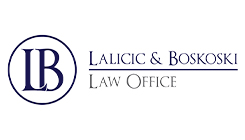The ascendant popularity of ESG across business sectors has also empowered the rise of its evil twin: greenwashing. To look at the interplay between the two and their implications for the pharma industry in CEE, we sat down with CMS Partners Gabriela Staber and Tomas Matejovsky.
CEELM: Considering the recent ESG updates, what green claims are pharma industry companies making and how are they communicating them?
Staber: First of all, pharmaceutical companies are known not for their product-related green claims, but rather for their company-related ones. If you look at pharmaceutical companies’ messaging, they frequently communicate about reducing their water consumption and carbon dioxide emissions, as they do, traditionally, consume vast amounts of water and produce sizable emissions as part of their production process. They also produce significant amounts of hazardous and non-hazardous waste, so they also communicate about their efforts to reduce that.
Some of these claims are very vague and difficult to substantiate, such as “being committed to sustainability.” Even when these claims are less vague, they can sometimes be misleading, for example, if companies do not use reliable data or recognized standards to calculate their environmental footprint. Frequently, these companies only highlight their positive steps and policies but do not mention the overall balance, by advertising projects reducing emissions but disregarding those activities with negative environmental impacts.
Matejovsky: The main risk pharma companies face (and will continue to face) concerning green claims is potentially related to the use of “natural” versus “chemical” compounds and communications related to those. Despite the fact that these may fall more into well-regulated health claims, there will be a risk of miscommunication and misunderstanding – and pharma companies should be very careful in drafting any such communications.
CEELM: What are the current regulations on such green claims? And what are the existing enforcement practices?
Staber: Normally, companies making green claims can be challenged or sued in relation to those claims. The features of these lawsuits depend on the country – sometimes lawsuits are initiated by competitor companies or consumer associations, on unfair competition or consumer protection grounds. In other cases, they focus on specific laws regulating advertising standards. In Austria, for example, it’s usually unfair competition – but the markets vary wildly – so we’ve created the CMS Green Globe, a platform to track the latest developments on sustainability claims and greenwashing in each country. It currently covers nine CEE jurisdictions. Also, under new EU rules, when there are cross-border infringements of a severe nature, very high fines based on annual turnover might be imposed.
Consequently, pharmaceutical companies might have to comply with injunctions, pay administrative fines or annual turnover-based penalties, and deal with reputational damage. The latter might actually have the most severe impact. Companies care to be associated with sustainable policies – that’s why they are incentivized to advertise as such – but in terms of reputational damage, it can backfire dramatically. For example, in Austria, a consumer association frequently conducts “greenwashing checks” and publishes the results on its website, which shows that a lawsuit is not a prerequisite to incurring reputational damage.
Matejovsky: The consumer protection regulatory authorities have already started to focus more on green claims – and we already see the first inquiries and proceedings being conducted – where the companies risk fines for misleading advertising. There are also self-regulatory bodies (usually “Advertising Councils”) involved and dealing with complaints both from consumers and competitors.
CEELM: What legal updates on the EU level are we looking at, down the line?
Staber: We don’t yet have any EU-wide regulation dealing with green claims specifically. Some countries have developed legislation or non-binding codes of conduct on the national level. However, we do have a proposal addressing green claims – an update to the Unfair Commercial Practices Directive. It might take until 2025 or 2026 for that update to come into force after transposition into national law.
We also expect another proposal – an EU regulation on how to substantiate green claims. It will include more details on what standards to apply when substantiating relevant claims, and will also be pertinent for monitoring future-oriented claims.
Still, these legal texts are coming from different parts of the EU Commission, and we’ll see how well they will work together, with different Directorates working on each.
Matejovsky: With the lack of EU-wide regulation, the authorities in several CEE countries have already published guidelines and soft laws containing recommendations with respect to green and environmental claims, which can help companies to address these issues in a more compliant way.
CEELM: What will change for pharmaceutical companies, according to these proposals?
Staber: According to the new proposals, companies cannot advertise vague claims, as they are required to substantiate them. They need to be very specific in their claims and have data ready to be provided, whenever necessary. Moreover, companies cannot selectively ignore their negative impacts: they will have to be open about those as well. And another thing: they won’t be able to advertise green achievements resulting from their compliance with the law – or compliance with industry standards – that’s just doing the bare minimum. Such messaging will be considered misleading claims. Some of this is already the standard in some countries, but it will now be regulated uniformly on the EU level.
In addition, there’s news related to future-oriented claims. For example, a company might announce that it will be climate neutral by 2040. In such cases, the new EU rules would require substantiation, through a robust and verifiable strategy to meet that goal, and an independent monitoring system, to monitor and certify whether companies are on the track to meet their promises.
CEELM: From your perspective, what will be the key impacts of the new regulations?
Staber: First of all, we’ll have to see the specific legislation, once it is adopted. The rules on substantiation will be helpful, pointing to specific standards for calculating companies’ effects on climate and the validity of their green claims. They will likely improve legal certainty for companies. But we still need to figure out what happens to claims that are already out there, such as future-oriented claims, if the substantiation standard changes under the new rules. This may require companies to correct previous statements and to make sure all their communication is compliant with the new standards. There will, of course, be a transition period but it might prove challenging for many pharma players.
Matejovsky: Another crucial factor with respect to green claims will be the adoption of a clear set of rules for the verification of those claims and, especially, verification of those companies or agencies issuing the relevant certifications, including their auditing and oversight.
This article was originally published in Issue 9.11 of the CEE Legal Matters Magazine. If you would like to receive a hard copy of the magazine, you can subscribe here.
























